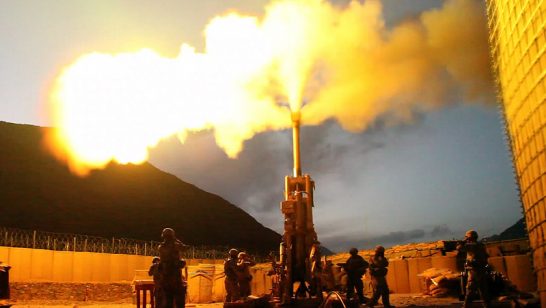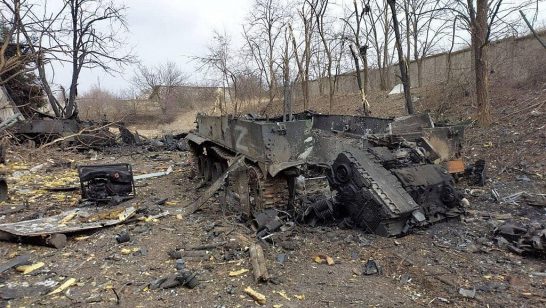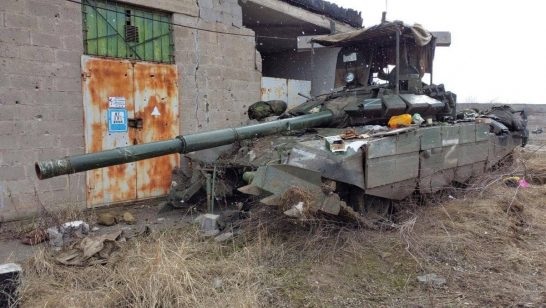
When comparing the Cold War with the current NATO-Russia relationship, it is easy to fall back on generalisations. A common generalisation about the Cold War is that there were much better lines of communication and crisis management processes in place then than there are now. However, this depends on exactly which Cold War time period one examines. Getting to a place in which bilateral crisis communication tools were in place between the United States and the Soviet Union took hard work. It also meant making it through a period of great uncertainty and severe crises, which highlighted the risks of the nuclear standoff between the actors.
The Cuban Missile Crisis was one such crisis which became a turning point for nuclear risk-taking and escalation management. It also provides an example of how easily miscommunication, misperception, and miscalculation can take place without officials even realising it. Presidents Khrushchev and Kennedy both made some flawed assumptions about the other which influenced their thinking. Khrushchev assumed that Kennedy was weak and would back down from any confrontation, whereas Kennedy assumed that there was a missile gap between the United States and the Soviet Union which disadvantaged the US. In reality, however, the Soviet Union had fewer strategic ballistic missiles which could reach US territory. When Fidel Castro turned to Khrushchev for military assistance, Khrushchev took the opportunity to place medium-range missiles in Cuba to be able to strike the United States from there. This catalysed a severe diplomatic crisis which was eventually resolved peacefully but contained several near misses with regard to nuclear escalation.
How close parties came to a nuclear escalation is what gave them pause after the crisis was resolved. It provided an impetus for negotiations around crisis communication arrangements. Due to how long it had taken for messages to be transmitted from one to the other during their negotiations, Kennedy and Khrushchev put in place the first direct hotline agreement between the Soviet Union and the United States. Frightened by the prospect of having to deal with several dozens of nuclear armed states in years to come, the United States also began to put forward a series of proposals and initiatives which eventually led to the Non-Proliferation Treaty (NPT). The Cuban Missile Crisis had been threatening enough to lead to measures of restraint, improved communication, and eventually, arms control.
The ongoing war in Ukraine has been compared to the Cuban Missile Crisis in several different analyses. However, they are very different crises: the Cuban Missile Crisis was a direct standoff between the United States and the Soviet Union, both nuclear armed. It took place comparatively early in the Cold War, when the arms race was still in full swing and crisis communication was only ad hoc. There were several near misses throughout the crisis: points at which individual commanders nearly made the decision to launch nuclear weapons but were prevented either by happenstance or convinced otherwise by colleagues. However, despite tensions running high, it remained a diplomatic crisis and never turned into a war.
The war in Ukraine, let’s not forget, is a very different type of conflict: it is a war of aggression waged by a very large nuclear-armed state against a smaller neighbouring state which does not possess nuclear weapons. In terms of warfighting, it has remained conventional. The Russian government has issued several nuclear threats but they seem to have been aimed at keeping NATO out of the conflict and maybe at weakening Ukraine’s resolve. It is not apparent that Russia has actually changed its nuclear readiness level despite a speech by Putin in February which claimed that Russia was moving its nuclear forces to ‘enhanced combat duty’ or deployed any additional nuclear weapons near Ukraine, and the US administration is on record saying that they see no reason to change their own posture or readiness level.
Simply because two crises both have a nuclear component does not necessarily make them alike. By making the war in Ukraine too much about the nuclear relationship between Russia and NATO, we risk playing into the Russian government rhetoric on why they felt compelled to invade Ukraine and risk downplaying the Ukrainian war effort and Ukrainian suffering.
If there is one parallel between the Cuban Missile Crisis and the war in Ukraine, it’s that decision-making is influenced by myths, enemy images, and beliefs. The fog of war makes miscommunication, misperception, and miscalculation that much more likely, in turn increasing the risk that further escalation might take place, and we might get even closer to a nuclear escalation.
If there is one parallel between the Cuban Missile Crisis and the war in Ukraine, it’s that decision-making is influenced by myths, enemy images, and beliefs. Marion Messmer
Whether the war in Ukraine will be able to provide a similar motivation for arms control efforts as the Cuban Missile Crisis did will depend entirely on how exactly it will end. Right now, it seems difficult to consider how Russian and US diplomats would engage one another on matters such as a New START follow on, as well as other topics which need to be broached in their bilateral relationship for greater stability, such as coming to a new arrangement on INF-range systems, missile defence concerns, as well as the conventional arms control agreements which need to be updated. This is exactly what makes the fog of war so dangerous: when all regular risk management processes feel blocked or impossible, how can we hope to de-escalate in an acute crisis situation? While we are lucky not to have nuclear weapons pointing at each other in the same way they did in the Cuban Missile Crisis, the drivers of the risks we are facing originate from a different set of causes:
- The Russian government might choose further intentional escalation. While an immediate direct nuclear attack on Ukraine or NATO territory is not likely, Putin could further increase nuclear readiness levels and therefore play with increasing risks by lowering the threshold to use.
- Even without intentional escalation, the tense political situation leaves much room for unintentional escalation through miscommunication, misperception, and miscalculation: some analyses keep highlighting Russia as an irresponsible and irrational actor which makes it easy to shrug and assume that it is too difficult to assess what Russia’s most likely next move might be, or how Russia might react to a certain Ukrainian or NATO move.
- Tensions could continue to increase slowly and as a result, the actors could climb the escalation ladder slowly until each step becomes riskier.
- Instead of finding a resolution, the war could become a frozen or lukewarm conflict that serves as a background for tensions and essentially makes further progress on disarmament, or any kind of resumption of cooperation with Russia impossible, in essence re-creating a new Cold War dividing line.
There does not seem to be too much Western governments can do about these risk drivers immediately, as much of that depends on Russia’s willingness to de-escalate. However, it would be a mistake to believe that the ball is entirely in Russia’s court. Marion Messmer
There does not seem to be too much Western governments can do about these risk drivers immediately, as much of that depends on Russia’s willingness to de-escalate, which does not seem to be high at this point in time. However, it would be a mistake to believe that the ball is entirely in Russia’s court. NATO’s upcoming nuclear exercise, Steadfast Noon, is set to go ahead. NATO Secretary-General Jens Stoltenberg has already said publicly that the exercise is going to continue as scheduled. Given the current level of tensions and the speculations about nuclear attacks, NATO should also continue to reach out to Russia in private diplomatic channels (as undoubtedly is happening already) to make clear that this is a regular scheduled exercise, and to be as precise as possible about what Russia can expect to see during this exercise so as to avoid any misunderstanding. In the meantime, it is also important to stay realistic about the risks of nuclear escalation, about how NATO actions might be perceived in Russia, and to ensure that communication is clear and consistent enough to avoid unintended consequences.
The opinions articulated above represent the views of the author(s) and do not necessarily reflect the position of the European Leadership Network or all of its members. The ELN’s aim is to encourage debates that will help develop Europe’s capacity to address the pressing foreign, defence, and security policy challenges of our time.
Image: Flickr, James Vaughan



